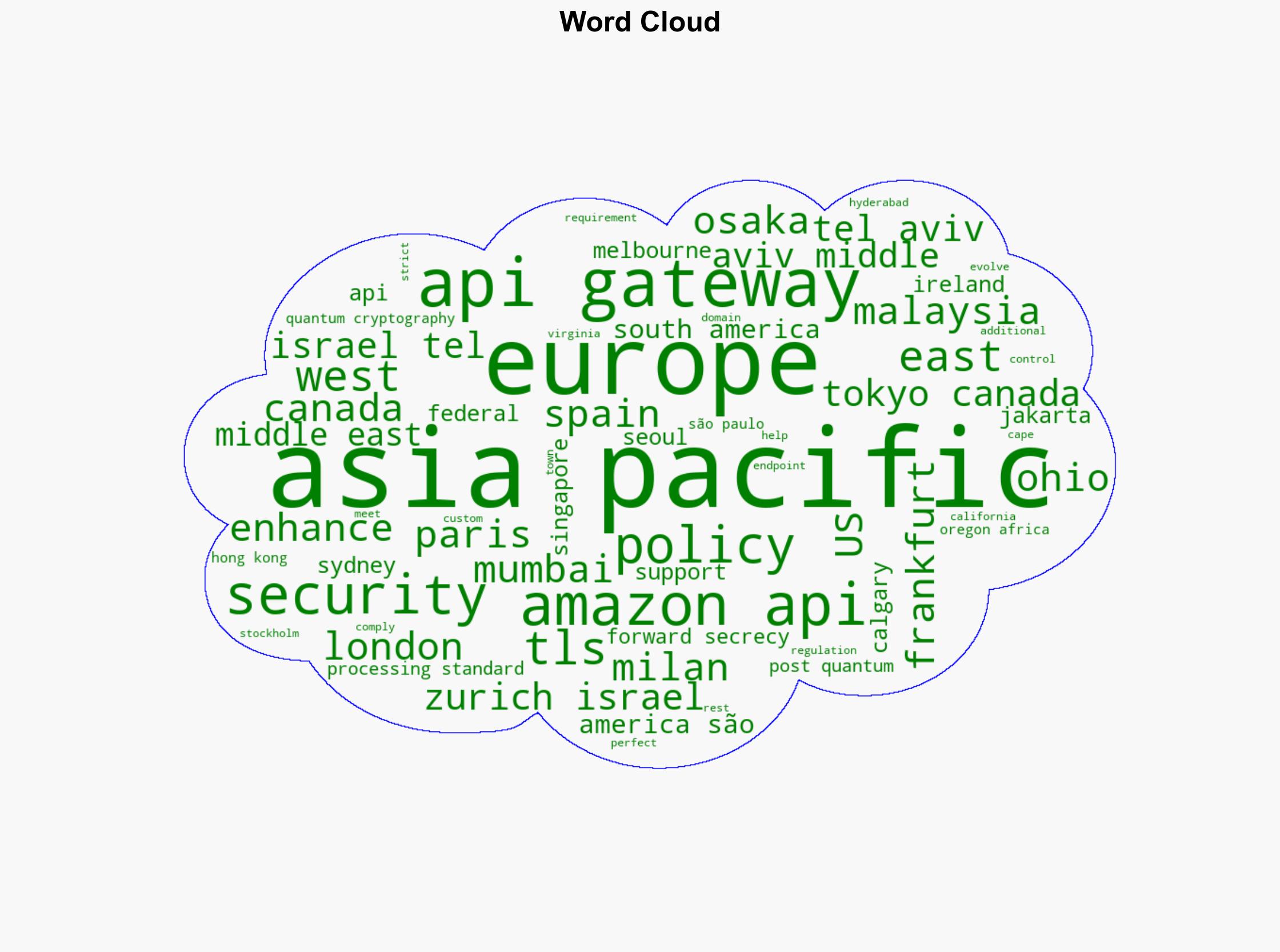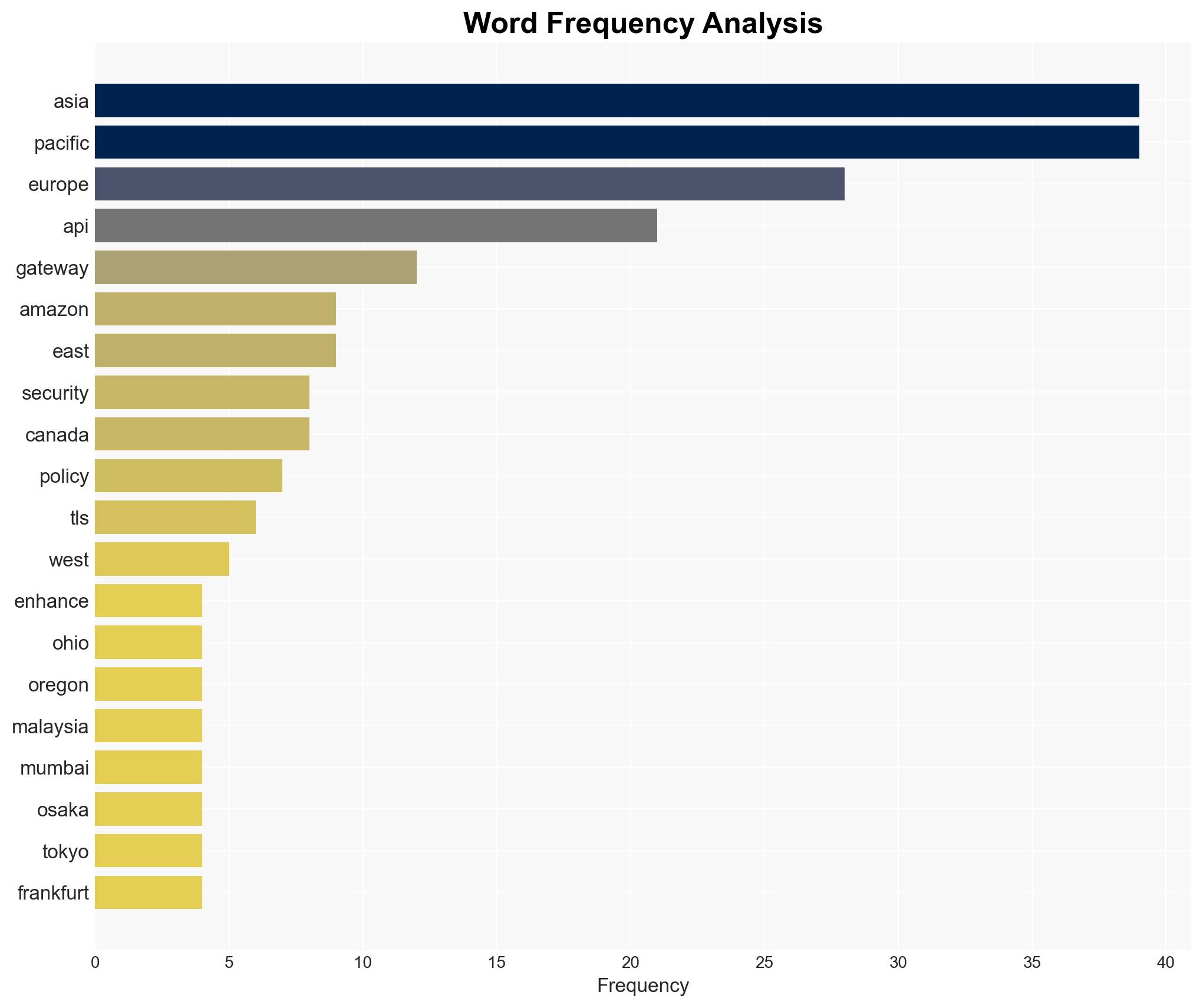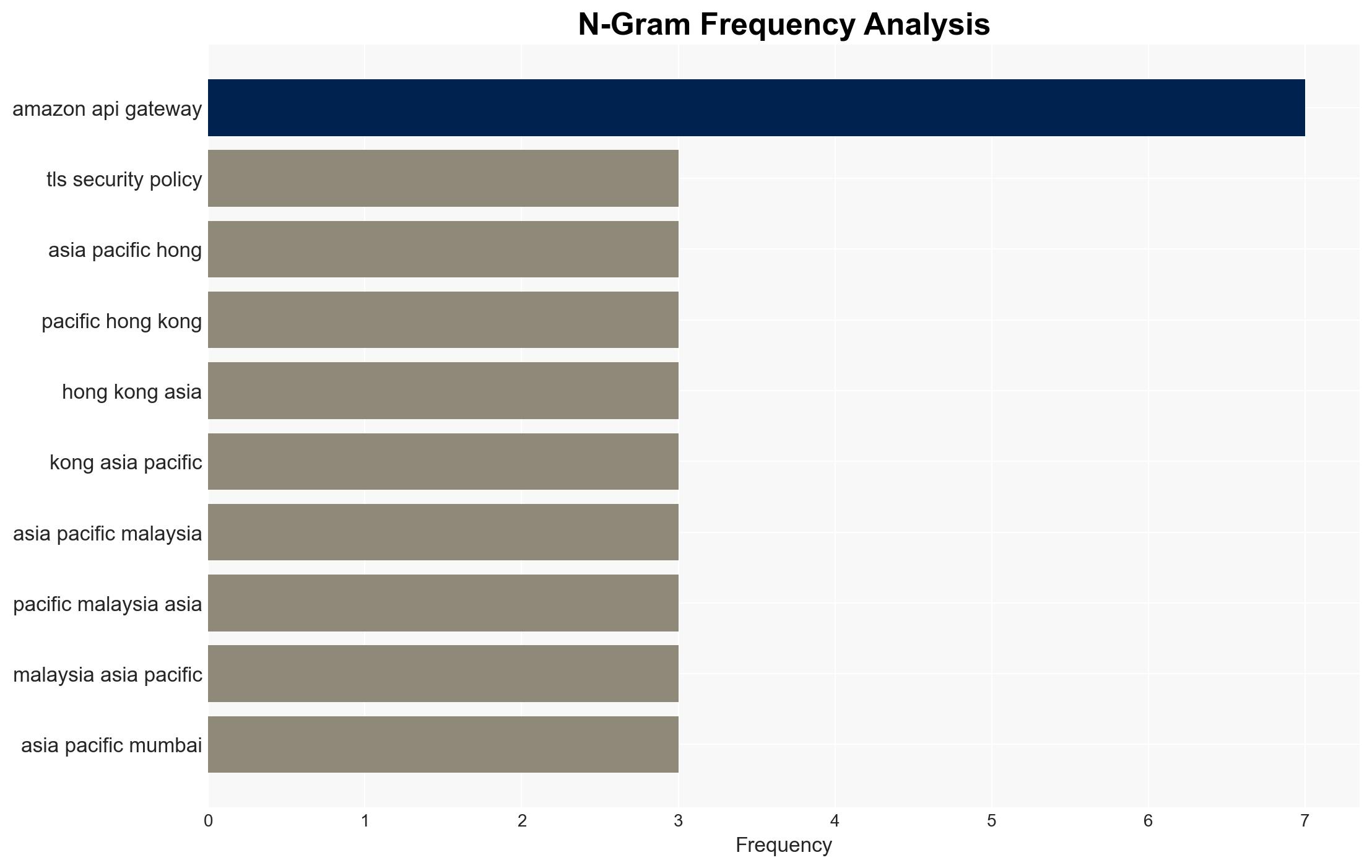Amazon API Gateway now supports additional TLS security policies for REST APIs – Amazon.com
Published on: 2025-11-19
AI-powered OSINT brief from verified open sources. Automated NLP signal extraction with human verification. See our Methodology and Why WorldWideWatchers.
Intelligence Report: Amazon API Gateway’s Enhanced TLS Security Policies
1. BLUF (Bottom Line Up Front)
Amazon’s API Gateway’s support for additional TLS security policies is a strategic move to enhance cybersecurity and compliance capabilities. The most supported hypothesis is that this initiative aims to preemptively address evolving regulatory requirements and security threats. Confidence Level: High. Recommended action includes monitoring regulatory changes and potential cyber threats to ensure continued compliance and security.
2. Competing Hypotheses
Hypothesis 1: Amazon is proactively enhancing TLS security policies to meet evolving regulatory requirements and improve customer trust in their API services.
Hypothesis 2: The enhancement of TLS security policies is primarily a response to increased cyber threats and vulnerabilities targeting API endpoints.
Assessment: Hypothesis 1 is more likely given the emphasis on compliance with strict regulations and the mention of federal processing standards. The broad geographic implementation suggests a focus on regulatory alignment across multiple jurisdictions.
3. Key Assumptions and Red Flags
Assumptions: It is assumed that regulatory compliance is a primary driver for these enhancements. Another assumption is that Amazon’s customers prioritize security and compliance in their API usage.
Red Flags: Lack of specific mention of any recent cyber incidents or breaches that might have prompted these changes. Absence of detailed information on how these policies will be enforced or monitored.
4. Implications and Strategic Risks
The enhanced TLS policies could set a new industry standard, pressuring competitors to follow suit. However, failure to adequately implement or communicate these changes could lead to reputational damage. There is also a risk of over-reliance on these policies without addressing other potential vulnerabilities in API security.
5. Recommendations and Outlook
- Monitor regulatory developments to ensure ongoing compliance and adjust policies as necessary.
- Enhance communication with customers regarding the benefits and implementation of these security policies.
- Best-case scenario: Amazon’s proactive measures lead to increased customer trust and market share.
- Worst-case scenario: A significant security breach occurs despite these enhancements, undermining customer confidence.
- Most-likely scenario: Amazon maintains its competitive edge by aligning with evolving security and compliance standards.
6. Key Individuals and Entities
No specific individuals are mentioned in the source text. The primary entity involved is Amazon Web Services (AWS).
7. Thematic Tags
Cybersecurity, Regulatory Compliance, API Security, Amazon Web Services
Structured Analytic Techniques Applied
- Adversarial Threat Simulation: Model and simulate actions of cyber adversaries to anticipate vulnerabilities and improve resilience.
- Indicators Development: Detect and monitor behavioral or technical anomalies across systems for early threat detection.
- Bayesian Scenario Modeling: Quantify uncertainty and predict cyberattack pathways using probabilistic inference.
Explore more:
Cybersecurity Briefs ·
Daily Summary ·
Support us





